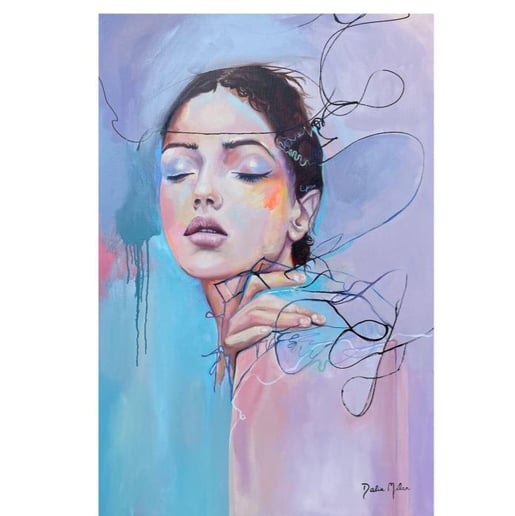Art is art, isn’t it?! There are those who believe art is simply...well, art, that there are no significant differences between artwork you pick up for $20 at the local home dėcor big store and a piece that is beautifully displayed on an art dealer’s gallery wall.
But there are differences in these two types of art. If that were not the case, there wouldn’t be separate markets for both.
True enough, the markets have begun to overlap a bit in recent years, but there is still enough difference between fine art and decorative art that it’s worth diving deeper into the topic. As you begin to develop your portfolio, you’ll want to know the difference between each style of art. Knowing the difference, then, will provide you with the way forward as you learn how to become a professional artist.

What Is Decorative Art?
The main purpose of decorative art is that it fits in the space where it will be displayed. An interior designer or homeowner has created a certain aesthetic in a room (or multiple rooms). They’ve carefully chosen the color scheme and the atmosphere they want to create. So when they purchase art to hang (or otherwise display), it has to match that design. The artwork needs to fit in the room.
Check out the lobbies in hotels, health care facilities, and corporate offices, and see how the artwork fits in that space. Decorative art is not simply for homes. It’s for any space that has a particular design in mind. The artwork may make you feel something, but you’ll feel what the designer intended you to feel when you were in that room. The entire room is designed to work together to create a specific ambience.
Decorative art is also closely tied to design trends. There is a time limit on how long that piece will work well in any given room. Once the trend or design changes, the artwork also changes. It’s tossed aside along with the other design elements to make room for whatever fits the new design.
Considering the limited time a piece is used, decorative art has a fairly low price ceiling. The artwork is almost a commodity that can be purchased anywhere, or at least something similar to it. It’s often made quickly and with lower-quality products. There isn’t much value placed in it because it’s, well...simply a decoration.
 What Is Fine Art?
What Is Fine Art?
The main purpose of fine art is to express the message from the artist. It is ALL about the artist—who they are and what their voice is. It’s the story behind the art and how the artist told it through their color palette and brush strokes.
Fine art creates loyal collectors because they love the artist, not just the art. They want to know the artist and follow them for life, watching them evolve.
Fine art IS the centerpiece of a room. It’s the focal point where everything else fits around it—not the art fitting in the space.
With this in mind, fine art can also be mindful of dėcor. It’s just not bound by it.
The art is chosen and purchased because it spoke to the buyer. The piece drew them in and compelled them to own it and to learn more about the one who created it.
The artist took time to express the message of their heart and often paints in multiple layers. Many times fine artists use higher-quality paints and other products to create their artwork. The piece will then stand the test of time.
The products used to create it and the message of the artwork itself produces a timeless piece that can even be passed on to the next generation.
Considering all that, there is more value placed on fine art than placed on the artwork that draws people in.
Fine art creates collectors, people who want more from the artist than just one piece. This greater value can also drive the price tag higher than art that is, well, just decorative.
Do You Create Decorative Art or Fine Art?
For up-and-coming professional artists, it can be difficult to decide whether to work in the fine art market or the decorative market. As has already been expressed, an overlap between the two markets has started to form. Still, most artists very often work in one market over the other.
As you’re in the process of becoming a professional artist, you’ll want to ask yourself this: Are you creating art for a specific function or is it conveying a message that is expressed in the colors and brush strokes you’ve made? What type of professional artist do you want to become?
The choice is really yours; collectors don’t have to go through art dealers or galleries any more. They can purchase paintings online directly from their favorite artists. We have access to people all over the world through the Internet. This gives collectors that direct line no matter where the artist lives.
If you’d like to learn more about how to become a professional artist, consider joining the Milan Art Community (free for lifewith any class purchase). Or if you’re ready to embark on a serious study of art in order to become a professional artist, think about joining our Mastery Program, which teaches you how to become a professional artist in one year.
Learn More About How to Become a Professional Artist
Overcoming Artist’s Block: 8 Ways for Finding Your Artsy Groove Again

